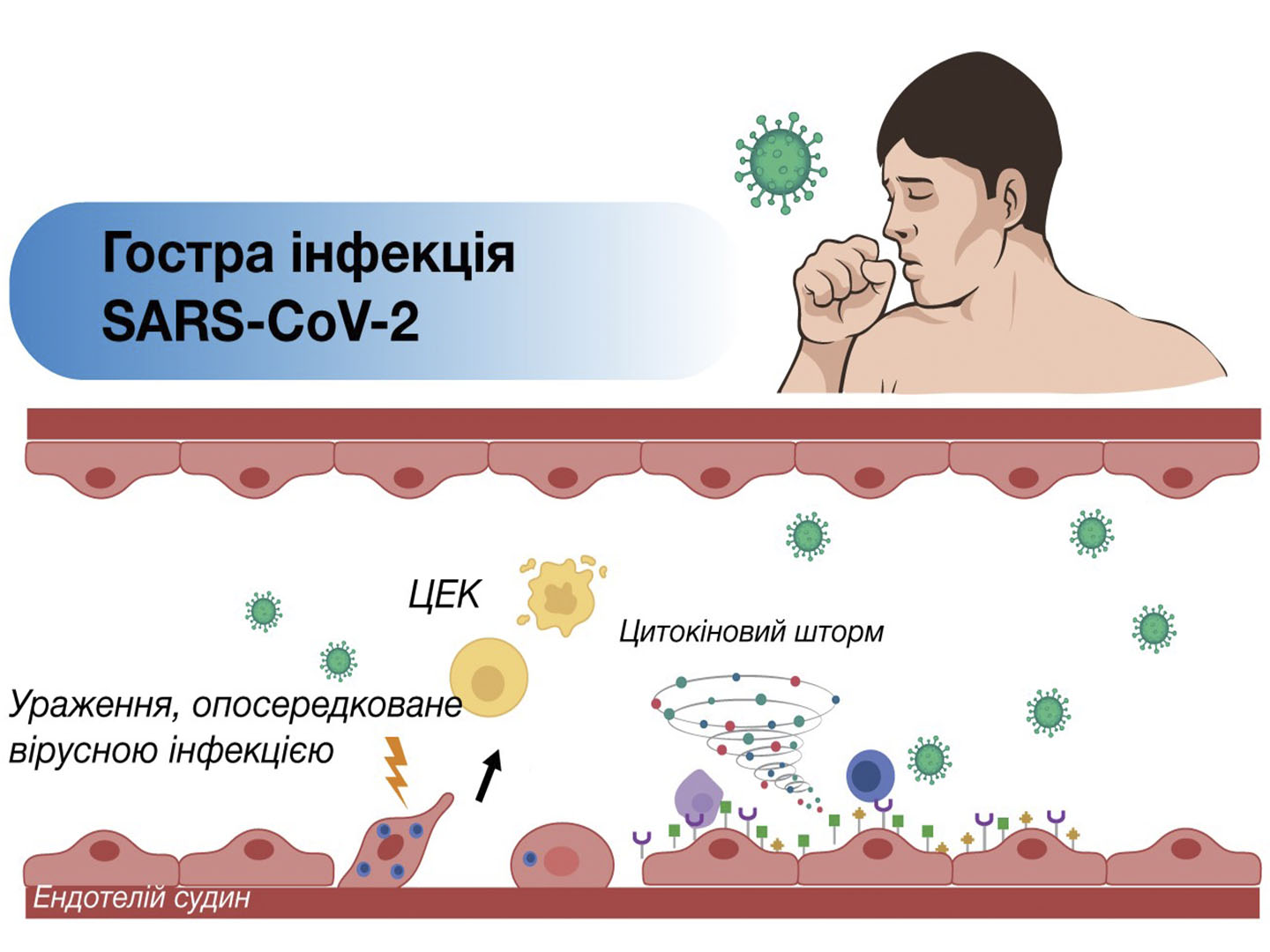Methods of Correction of Neurological Disorders in Patients with Coronavirus Disease (COVID-19)
Eighty-three patients with coronavirus disease were examined at the Kharkiv Oblast Clinical Infectious Hospital and divided into groups depending on the therapy prescribed. In the main group, a syndromic-pathogenetic approach “Volnorez” was added to the baseline therapy. Against the background of treatment according to the scheme, which included edaravone, a combination of L-arginine and L-carnitine and hyperosmolar balanced solution, rapid regression of fever, headache, sleep disorders, anxiety and general weakness was observed; normalization of laboratory indexes: decrease of D-dimer, CRP, IL-6, ALT, AST, GGT activity in blood serum (p<0,001).
Purpose of work. To analyze the incidence and spectrum of neurological disorders in patients with coronavirus disease, improve pathogenetic treatment.
Materials and methods. 83 patients with coronavirus disease hospitalized at the Regional Clinical Infectious Disease Hospital KNP CHOR were examined for the period from May to December 2020. The patients were divided into groups depending on the severity of the disease and depending on the prescribed therapy. The obtained results were processed according to the general rules of variation statistics on the solidification of the Student’s t test.
Results. Clinical manifestations to indicate lesions of the nervous system were observed in 34 (70.83%) patients with moderate and 32 (91.48%) patients with severe coronavirus disease. Neurological signs such as impaired consciousness, headache, anxiety, anxiety and depression were more common in patients of the second group (p<0.05). Against the background of treatment according to the scheme, which included edaravon (xavron), a combination of L-arginine and L-carnitine (tivorel) and hyperosmolar balanced solution (reosorbilakt), significant positive dynamics of clinical neurological manifestations and normalization of the studied laboratory parameters were observed.
Conclusions. Neurological manifestations are typical of a new coronavirus disease. The incidence of certain neurological symptoms (impaired consciousness, headache, anxiety, worry, depression) depended on the severity of COVID-19 and was more common in patients with severe disease. The use of edaravon (Xavron), a combination of L-arginine and L-carnitine (Tivorel) and hyperosmolar balanced solution (Rheosorbilact) in the complex therapy of patients with COVID-19 promotes regression of clinical manifestations and normalization of laboratory parameters compared to standard pathogenetics.
Keywords: coronavirus disease, neurological disorders, therapy, edaravone, L-arginine, L-carnitine.
Authors:
Yurko E., Kucheryavchenko V., Solomennik A., Lesnaya A., Kharkiv National Medical University, Kharkiv, Ukraine.
Literature:
- Jiang , Xia S., Ying T. (2020) A novel coronavirus (2019-nCoV) causing pneumonia-associated respiratory syndrome. Cell Mol Im- munol, vol. 17, no 5, pp. 554.
- Huang , Wang Y., Li X. (2020) Clinical features of patients in- fected with 2019 novel coronavirus in Wuhan. China. Lancet, vol. 395, no 10223, pp. 497–506.
- Yang J., Zheng Y., Gou (2020) Prevalence of comorbidities in the novel Wuhan coronavirus (COVID-19) infection: a systematic re- view and meta-analysis. Int J Infect Dis., no 94, pp. 91–95.
- Yin , Huang M., Li D. (2020) Difference of coagulation features between severe pneumonia induced by SARS-CoV2 and non-SARS- CoV2. J. Thromb Thrombolysis, no 3, pp. 1–4.
- Connors J.M., Levy J.H. (2020) COVID-19 and its implications for thrombosis and anticoagulatio Blood, vol. 135, no 23, pp. 2033– 2040.
- Thachil J., Tang , Gando S. (2020) ISTH interim guidance on recognition and management of coagulopathy in COVID-19. Journal of Thrombosis and Haemostasis, vol. 18, no 5, pp. 1023–1026.
- Martinelli , Ferrazzi E., Ciavarella A. (2020) Pulmonary embo- lism with COVID-19. Thromb Res., no 191, pp. 36–37.



